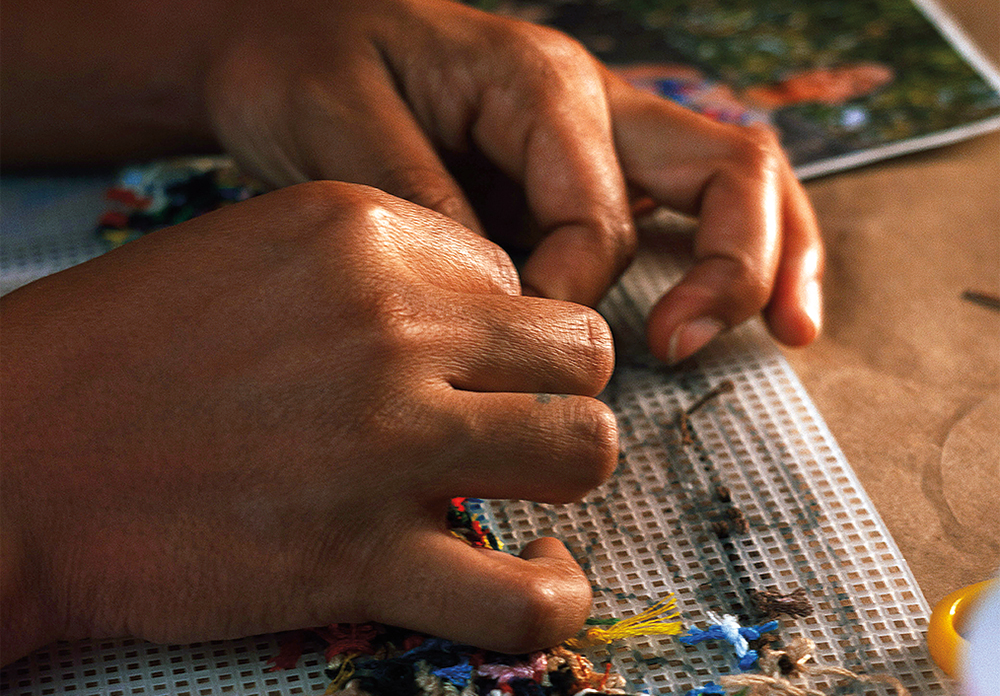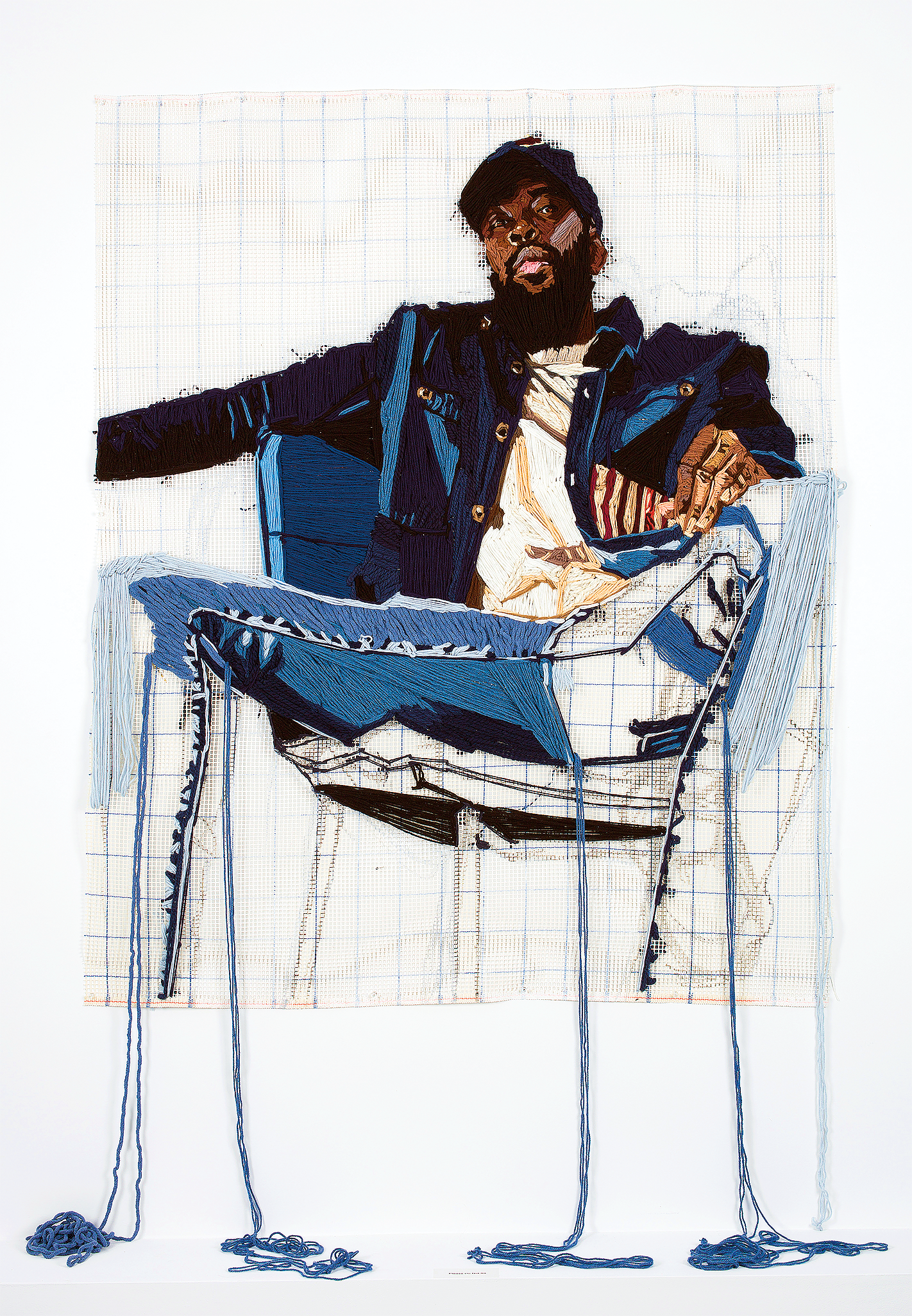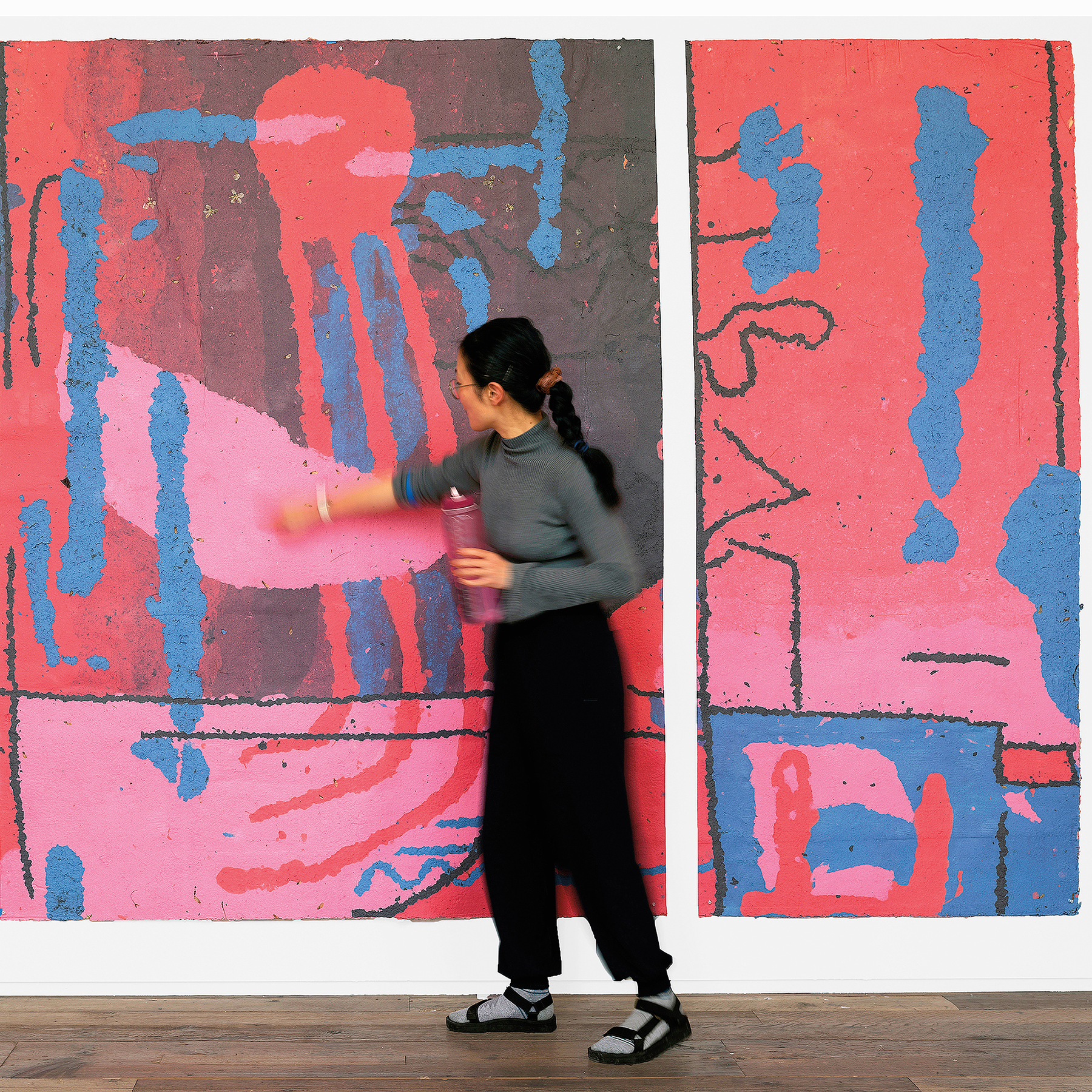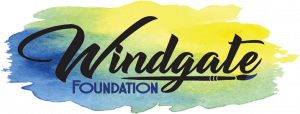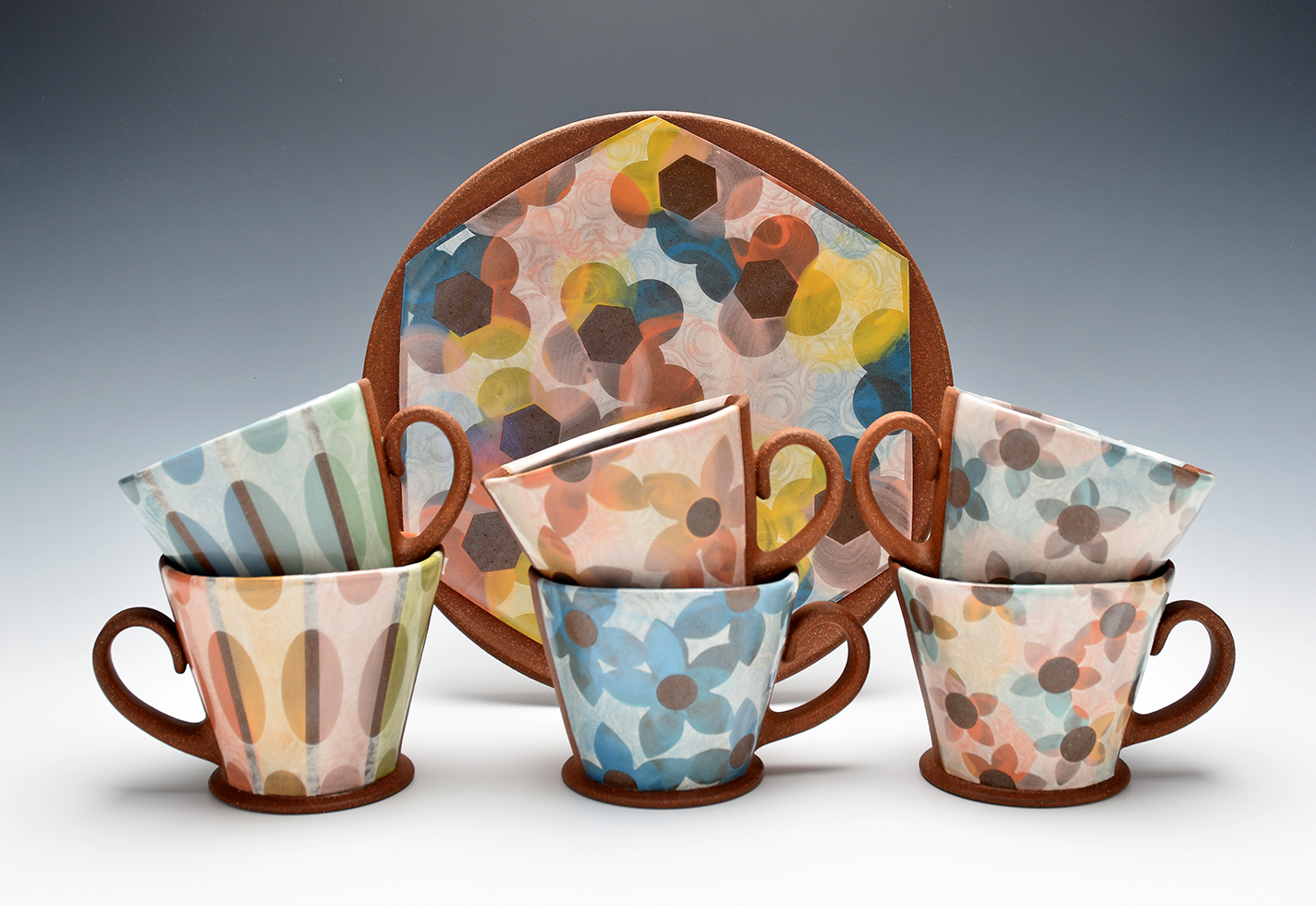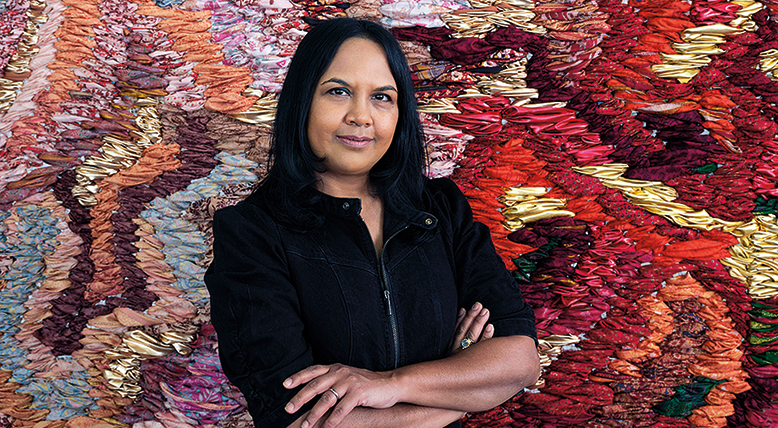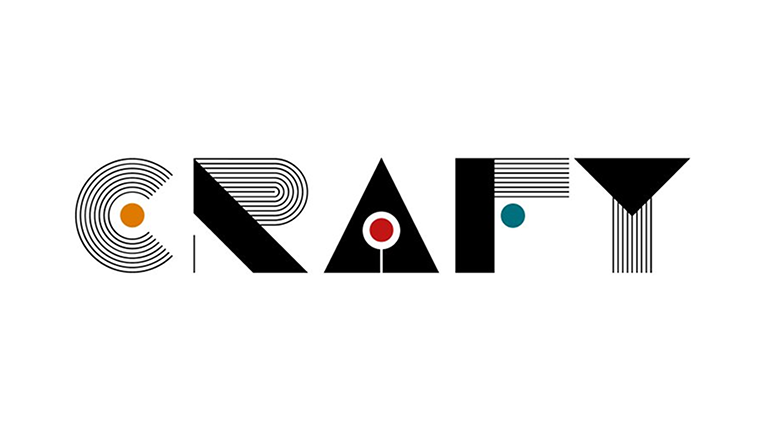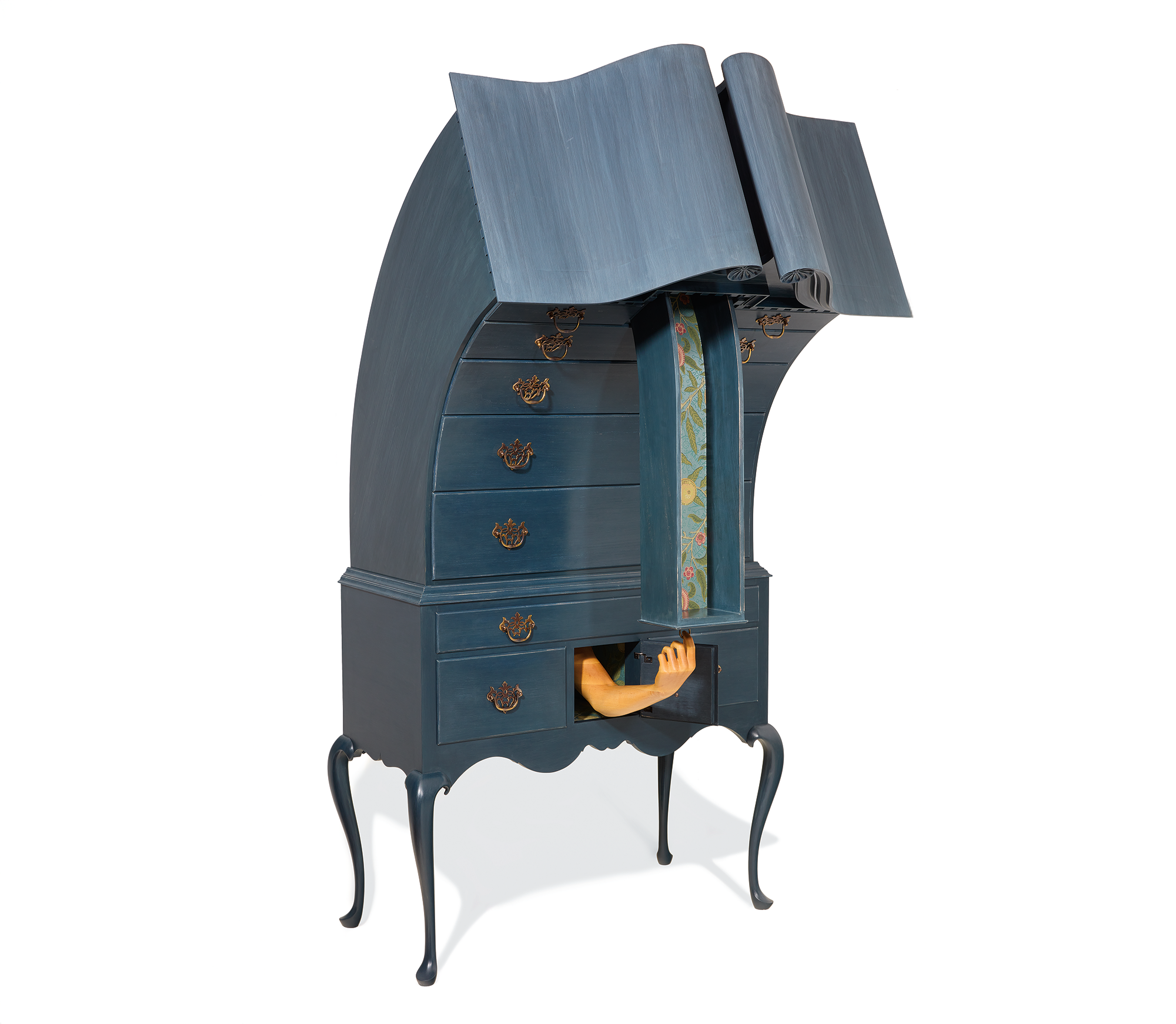It’s in the Eyes
by Kandy G Lopez
My first step in any piece is inspiration. That usually comes in the form of a photograph I’ve come across on Instagram or a person who stops me in my tracks and makes my heart beat frantically. Readings also inform my work, because the words create pictures in my brain that I add to the visuals in my sketchbook.
Once I know what I’d like to create, I start with a clean slate. I schedule a morning to organize my studio and color-code my threads and yarns. OCD sets in. I pick up the pieces of leftover yarn and thread from the floor in my kitchen or studio space.
If I’m working at my kitchen table, I’m planning to create a small, intimate piece. This usually happens when I get overwhelmed and exhausted with the laborious nature of my 8-by-5-foot fiber paintings. The small ones are a break for me. They are also a challenge. My mind switches from yarn to thread, from bigger holes to very tiny ones. Depending on the size of the holes in the plastic canvas, I have to pull the strings apart to get three strands instead of six. The thinness of the strands gives me the ability to create sharper details. It’s easier to manipulate the curve of the eyes with smaller thread. It’s like switching paintbrushes.
If I’m working from home, it’s usually after my husband has put our two kids to bed. The night is quiet, the dogs are settled, and I wind down by making myself a cup of Bustelo coffee, which is like hot chocolate to me. Once the table is cleared and I’ve set my podcast or music—usually hip-hop or Bad Bunny—I think about my color choices. I usually have five colors picked out at a time. I run out of black and burnt sienna constantly.
If I’m working on bigger pieces, it’s typically in the studio. I’ve cleared my desk as much as possible and set the yarn balls in their place. I’ve printed my image on an 11-by-17-inch piece of paper and pinned it to the wall, and precut my hooking mesh and hung it so it’s ready to draw on. I use Expo dry erase markers to make my figures. I love measuring and editing. It’s another challenge—the game is to try to get it all correct on the first go. I fail every time, but feel satisfaction when a limb is correctly placed.
I make sure my ladder is nearby so I can get to the high spots on the mesh, and I have water or, again, coffee as a snack. At times I purchase M&Ms or a Dunkin’ donut, especially if it’s past 8 p.m., because I know I’ll be at the studio until 11 or midnight and I need the sugar boost.
Once the image is sketched in, I pick out yarns for the skin. I pray that I have all the colors I need. I go through a lot of browns and blues. It depends on the light within the image and the person’s complexion. Once that’s set, I thread at least three colors: black, off-white, and brown.
My ritual is to start with the eyes. Eyelash line first, then iris, then pupil, then whites. There are pink and gray shades within the eye. There are browns and highlights within the iris. After that, I work around the eye socket to get the eyelids, eye bags, and eyebrows. This usually takes 30 minutes to an hour. I try not to get too caught up in the details, and focus on the shapes and colors that make the person unique. Each eye is different, even right to left. The eyes create the connection with the viewer. It’s important that my subjects look directly at the camera so their presence is felt.
Then, at some point, I look at the clock and know it’s time to wrap things up and snuggle in bed with my husband.
kandyglopez.com | @kandyglopez
Afro-Caribbean multimedia artist Kandy G Lopez creates ultra-vivid portraits in fiber, stained glass, and oil. Her fiber portraits, made of thread and yarn, are as intricate as her oils, but with a three-dimensional quality that makes her subjects look as though they might step or dance right off the mesh canvas. Born in New Jersey, Lopez is a professor and program director of art and design at Nova Southeastern University in Fort Lauderdale, Florida. She makes art at home but also keeps a studio on campus.

Lopez expertly rendered Rohan’s bold shirt pattern in yarn.

